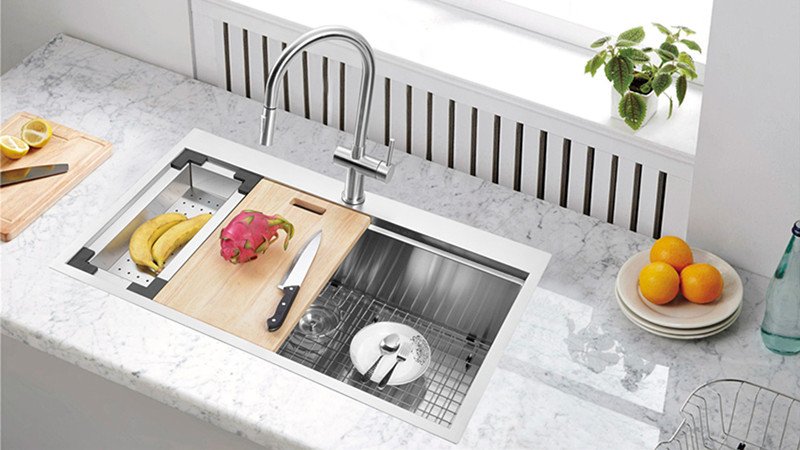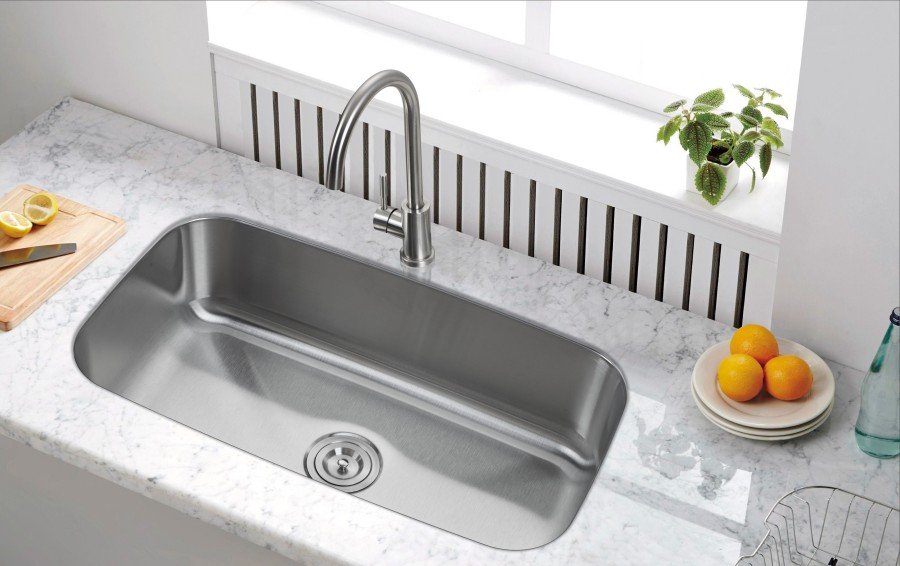Kitchen sinks play a crucial role in the overall design and functionality of a kitchen. When considering a new kitchen sink, two popular options are top mount (drop-in) and flush mount (undermount) sinks. Both types have their own unique features, benefits and drawbacks, making it important to consider which one is the right fit for you and your kitchen.
Top Mount Kitchen Sinks
Top mount kitchen sinks, also known as drop-in sinks, are the most traditional type of kitchen sink. They are installed by placing the sink in a pre-cut hole in the countertop, with the rim of the sink resting on the counter. This type of sink is popular for its easy installation process, as well as its versatility in terms of compatibility with different countertop materials.

One of the main advantages of top mount sinks is their affordability, as they tend to be less expensive than flush mount sinks. Additionally, the lip of the sink provides an ideal area for food preparation and cleaning, as it keeps water and other kitchen messes contained within the sink. Top mount sinks are also ideal for those who prefer a seamless look, as the rim of the sink can be covered with a sink accessory such as a sink rim or sink rail.
However, top mount sinks have a few disadvantages to consider. Due to their design, top mount sinks tend to trap food and debris between the sink and the countertop, which can be difficult to clean. Additionally, the rim of the sink can get in the way when trying to wash large pots or pans. Finally, top mount sinks tend to look less modern and sleek compared to flush mount sinks.
Flush Mount Kitchen Sinks
Flush mount kitchen sinks, also known as undermount sinks, are installed by securing the sink to the bottom of the countertop with clips. This results in a seamless look, with no rim between the sink and the countertop, providing a more modern and sleek appearance.
One of the main benefits of flush mount sinks is their easy cleaning, as there is no lip for food or debris to get trapped in. This makes it easier to keep the sink and countertop looking clean and hygienic. Flush mount sinks also provide a larger workspace, as there is no lip or rim to get in the way when washing large pots or pans. Finally, flush mount sinks tend to be more durable than top mount sinks, as the sink is supported from underneath and is less likely to loosen over time.

However, flush mount sinks are typically more expensive than top mount sinks, and can be more challenging to install. Additionally, flush mount sinks are not as versatile in terms of compatibility with different countertop materials, as they typically work best with solid surface materials such as stone, solid surface or quartz. Finally, flush mount sinks require a solid and stable countertop, as any imperfections in the countertop may be visible.
What’s the difference between top mount kitchen sink and flush mount kitchen sink?
A top mount kitchen sink, also known as a drop-in sink, is installed by placing the sink in a hole in the countertop with the rim of the sink resting on the counter. A flush mount sink, also known as an undermount sink, is installed by securing the sink to the bottom of the countertop with clips, resulting in a seamless look with no rim between the sink and the counter.
In conclusion, the choice between a top mount and flush mount kitchen sink will depend on a variety of factors, including personal preference, budget, and the overall design of your kitchen. Both types of sinks have their own unique features and benefits, making it important to consider which one is the right fit for you and your kitchen.
